
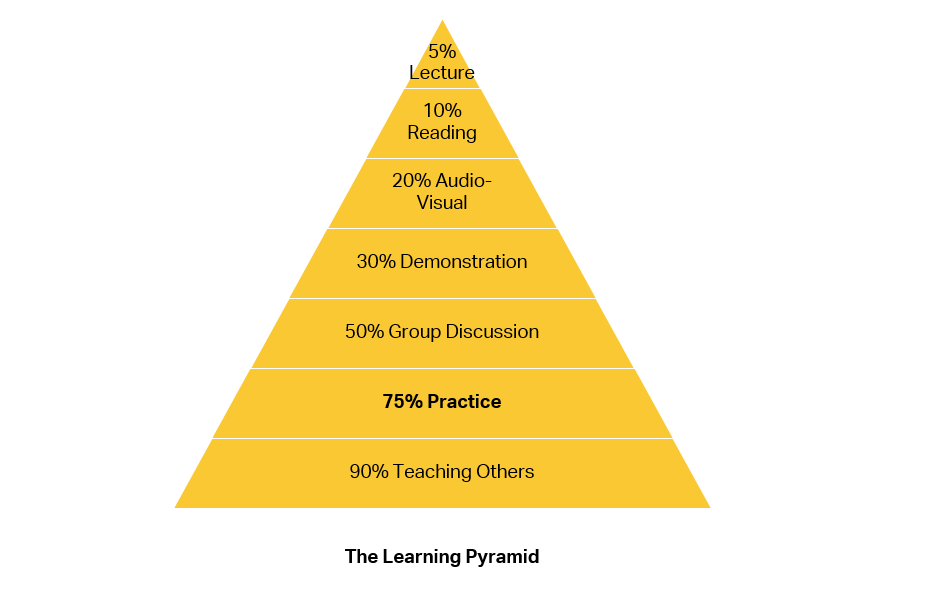
The primary objective of safety risk management is to identify, assess and manage risks associated with hazards and safety deficiencies. Hazards and safety deficiencies can lead to accidents and incidents, which impact lives, property and the environment.
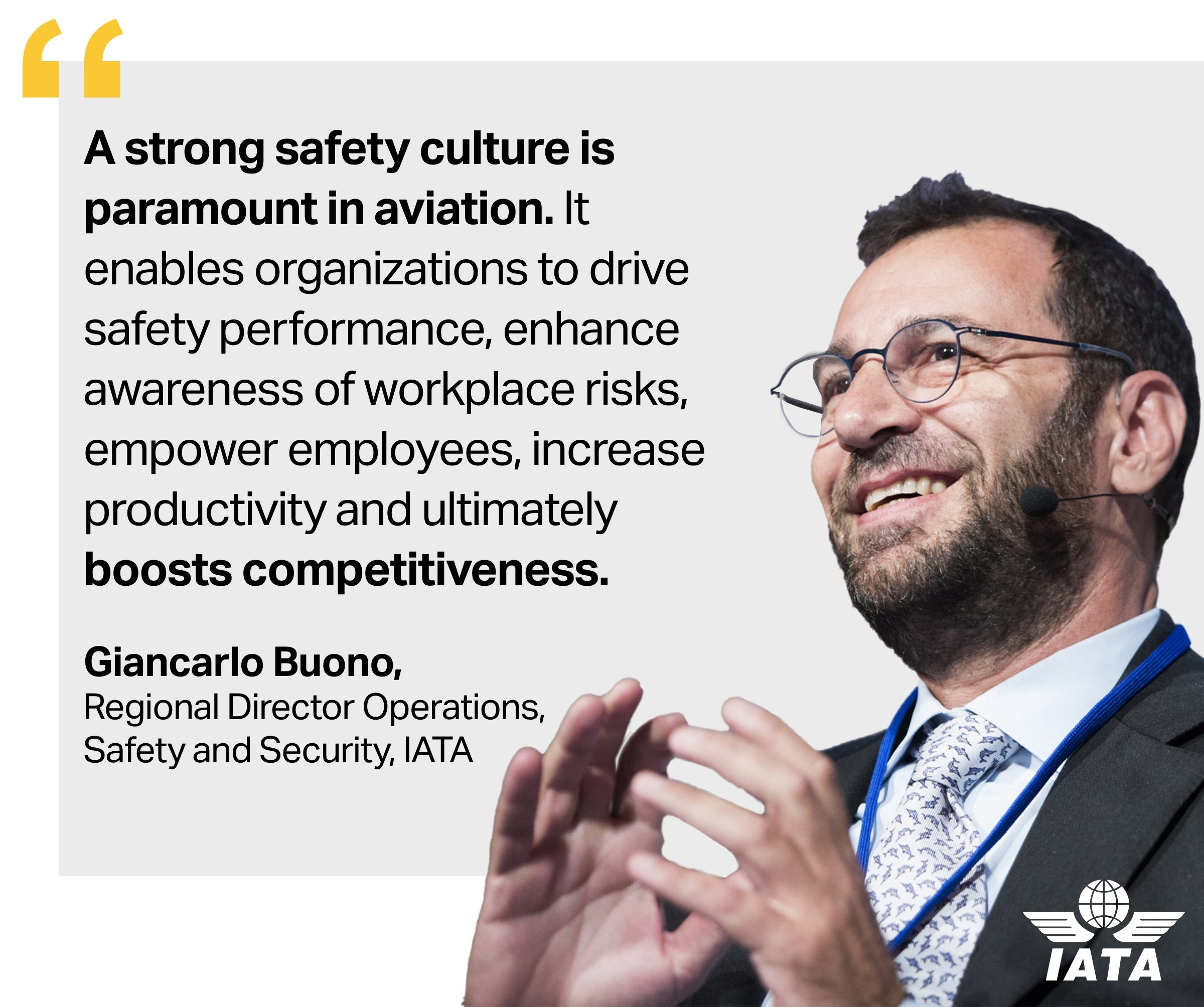
The IATA Safety Risk Management Simulation immerses participants in a realistic, risk-free airline operating environment, enabling them to build proficiency in assessing risks and making decisions. Participants collaborate to identify, devise and implement the best strategies for maintaining safe and secure operations, reflecting on their decisions and outcomes as the game progresses.
The simulation focuses on teamwork, forcing effective communication, negotiation and consensual decision-making, which is a reality in safety risk management. In this way, it improves the efficiency of risk assessments in organizations. The simulation also incorporates safety culture aspects, which influence risk. This highlights to participants the importance of safety culture and reporting, and prompts them to evaluate their own organization’s safety culture and its impact on decision-making.
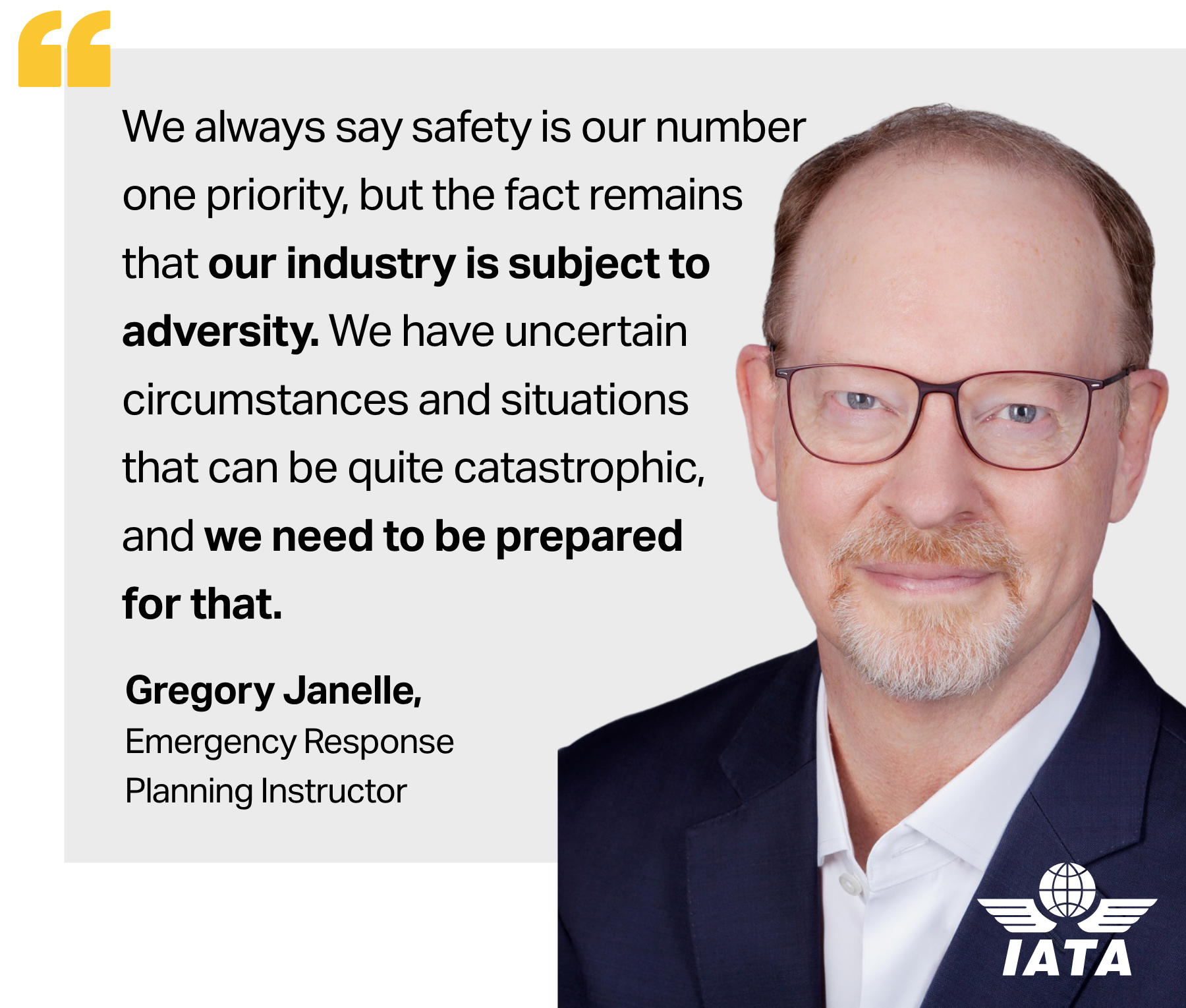
Effectively executing an emergency response plan (ERP) means being able to act with timeliness and good judgement, working as a team. Hesitation and lack of preparedness can affect lives, livelihoods and the future of the organization.
Emergency response planning is one of IATA’s newer simulations, and exists both for airlines, and for airports and GHSPs. Like the others, it provides realistic scenarios that help participants come together as a team and use their critical thinking skills to succeed. As the game becomes more complex, they build their skills in stages. The scenarios are customizable to match the level of challenge to the audience, whether newcomers, or experts who want to refresh their skills, and also to match with your airline’s ERP framework for in-house sessions.
The simulation allows the team to experience the pressure of a crisis event, and learn to talk to each other and work together. Its gradual progression allows them to be eased in, and the review process enables them to learn from their mistakes.
Maximizing airline revenue is a highly complex activity and requires the perfect blend of pricing and load factor management. The actions taken in executing this complex role have a direct impact on the profitability of an airline, making the consequences of learning –or innovating – on the job significant.
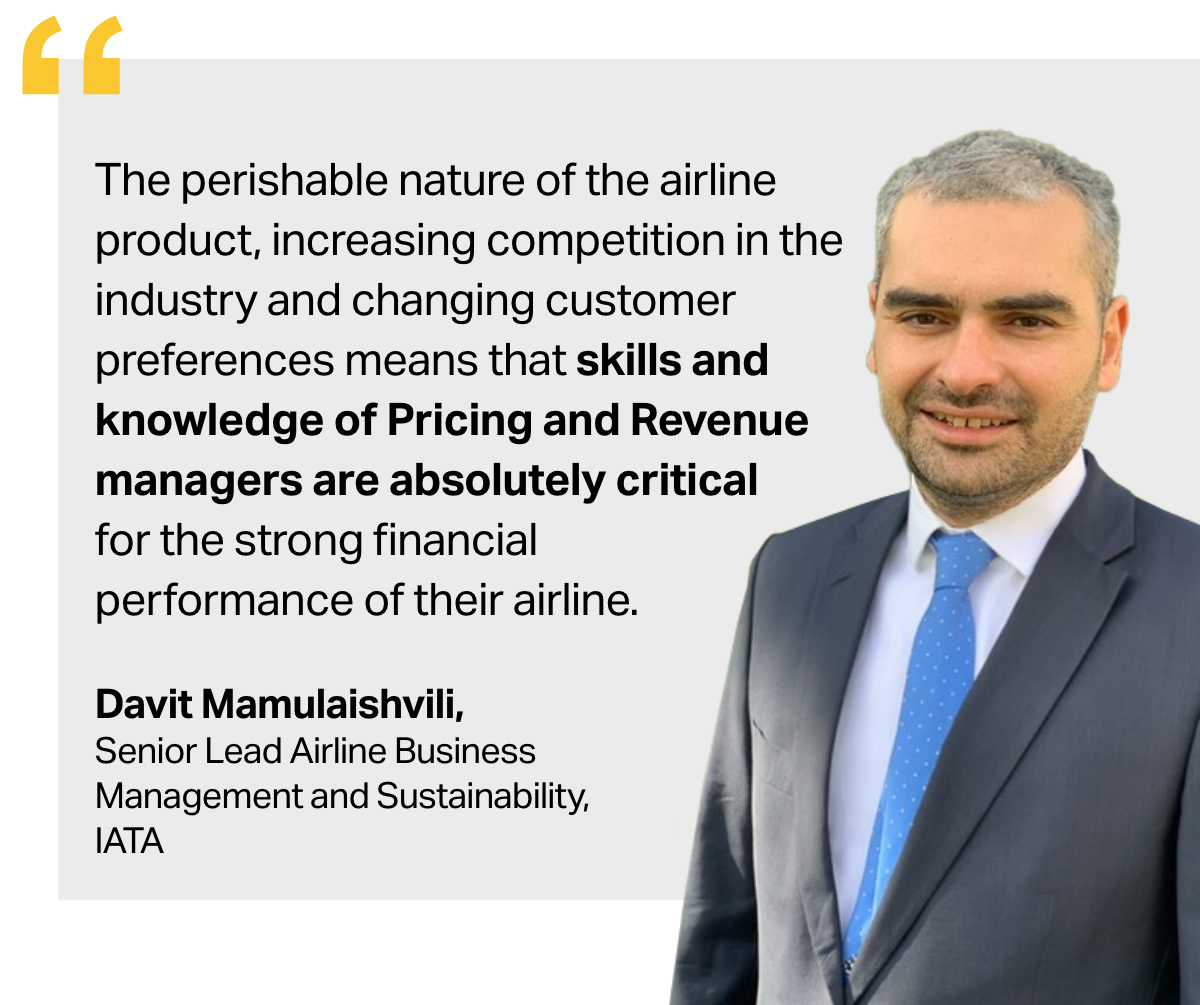
The revenue management simulation game can be played alone or as part of a team, and is incorporated as part of the introductory course Revenue Management and Pricing with simulation, and the Revenue Management for Practitioners with simulation course for experienced revenue managers. It enables participants to make changes to pricing strategy over several rounds, based on the results of the previous round. In between rounds, participants can discuss the results with the IATA instructor, constantly refining competencies and developing critical skills.
With this completely risk-free environment, participants are at liberty to experiment in different ways. They actively think outside the box and come up with a lot of innovative ideas that they put into simulated practice to see what works.
An airline is a highly complex and interdependent organization with a strategic decision in each commercial area having the potential to create a significant impact on the overall bottom line.
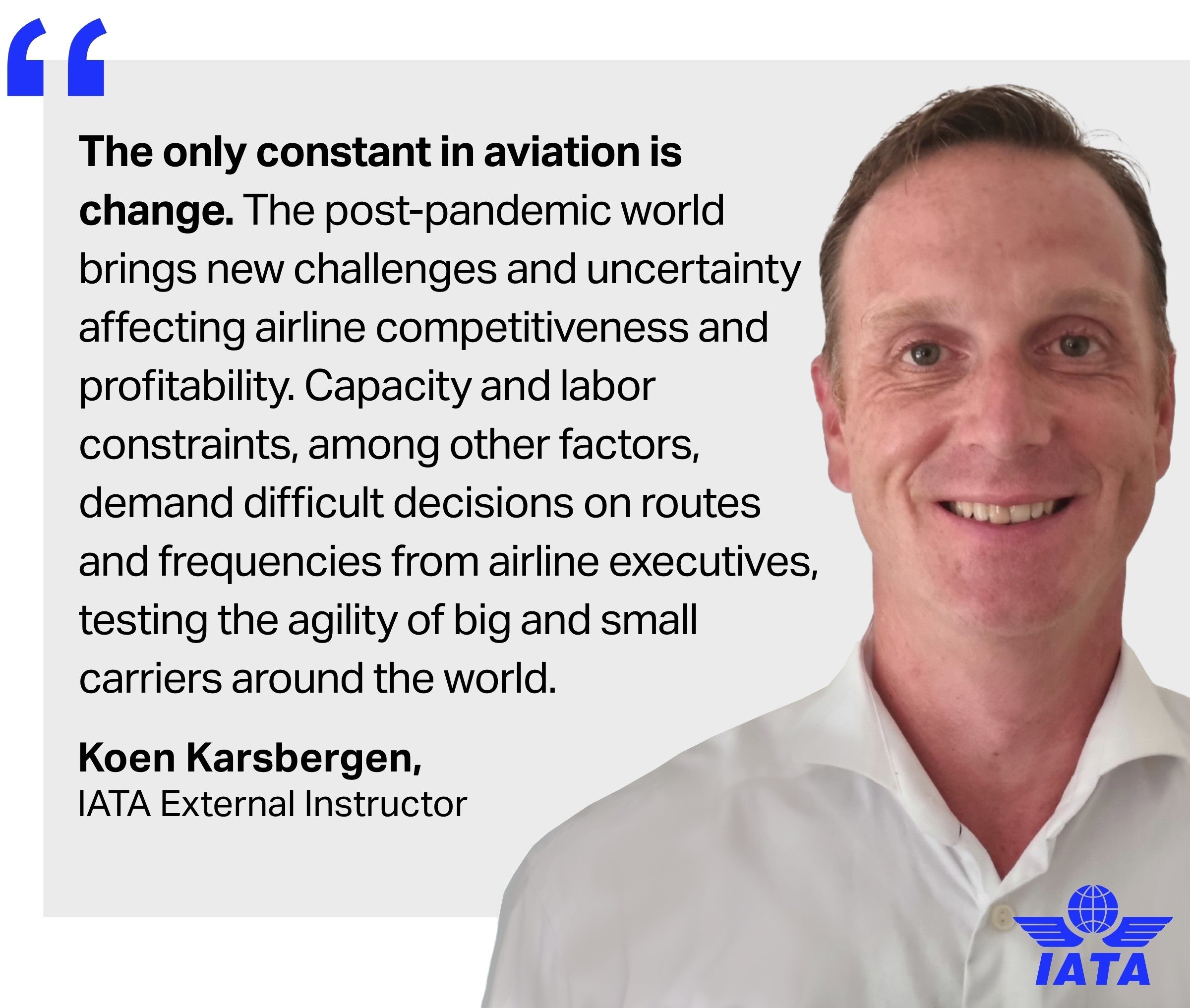
IATA's proprietary state of the art simulation, Air Mercury, is based on the concept of experiential learning and helps the training course participants understand how the various commercial decisions are interrelated and contribute to the overall profit or loss of an airline. Working in teams, participants aim to build the most profitable airline. They devise and execute network strategy, and manage and optimize capacity, with the aim of capturing market share. The game involves all the key areas of commercial management of an airline, including the business model, the type of fleet, the network, scheduling, and price points; and also the constraints, like flight time limitations for crew, airport operating hours, and maximum aircraft utilization.
The simulation is part of the Airline Business Models and Competitive Strategies course, and is relevant to any professional that wants to have an overall understanding of how an airline works and the interconnectedness of its functions. Participants, who range from people outside the industry to current airline C-suite members, are equipped, through the game, with problem-solving and critical thinking skills, that they build up through rounds.